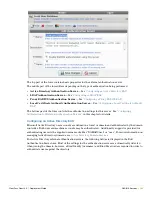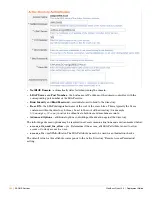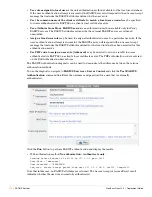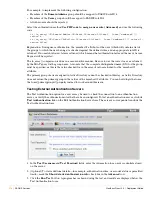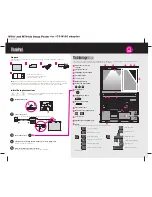
ClearPass Guest 3.9 | Deployment Guide
RADIUS Services |
161
Provide these credentials in the
Leave Active Directory Domain
form and click the
Leave Domain
button.
External Authentication Servers (EAS)
Many networks have more than one place where user credentials are stored. Networks that have different
types of users, geographically separate systems, or networks created by integrating different types of
systems are all situations where user account information can be spread across several places.
However, network access equipment is often shared between all of these users. This requires that different
authentication sources be integrated for use by the network infrastructure.
ClearPass Guest’s RADIUS server supports multiple
external authentication servers
, allowing user
accounts from different places to be authenticated using a common industry-standard interface (RADIUS
requests).
Use the
Authentication
command link on the
RADIUS
page to create and manage authentication servers,
and to modify system settings related to user authentication.
To perform certain types of user authentication, such as using the MS-CHAPv2 protocol to verify a
username and password, the RADIUS server must first be joined to an Active Directory domain. See
Active
Directory Domain Services
for more information.
Types of External Authentication Server
An authentication server may be one of five types:
Local user database
— User accounts defined in Guest Manager.
Microsoft Active Directory
—User accounts defined in a forest or domain and authenticated by the
domain controller. Both user and machine accounts may be authenticated. Additionally, support is
provided for authenticating users with a supplied username of either “DOMAIN\user” or “user”.
LDAP server
(Lightweight Directory Access Protocol)—User accounts stored in a directory.
Proxy RADIUS server
—User accounts authenticated by another RADIUS server.
Local Certificate Authority
—The client provides their own local certificate authority to issue
private certificates for users within its organization. Visitor accounts are authenticated through EAP-
TLS, and the authorization method can be configured.
Summary of Contents for ClearPass Guest 3.9
Page 1: ...ClearPass Guest 3 9 Deployment Guide ...
Page 32: ...32 Management Overview ClearPass Guest 3 9 Deployment Guide ...
Page 178: ...178 RADIUS Services ClearPass Guest 3 9 Deployment Guide ...
Page 316: ...316 Guest Management ClearPass Guest 3 9 Deployment Guide ...
Page 410: ...410 Administrator Tasks ClearPass Guest 3 9 Deployment Guide ...
Page 414: ...414 Administrator Tasks ClearPass Guest 3 9 Deployment Guide ...
Page 423: ...ClearPass Guest 3 9 Deployment Guide Hotspot Manager 423 ...
Page 440: ...440 High Availability Services ClearPass Guest 3 9 Deployment Guide ...
Page 518: ...518 Index ClearPass Guest 3 9 Deployment Guide ...

















